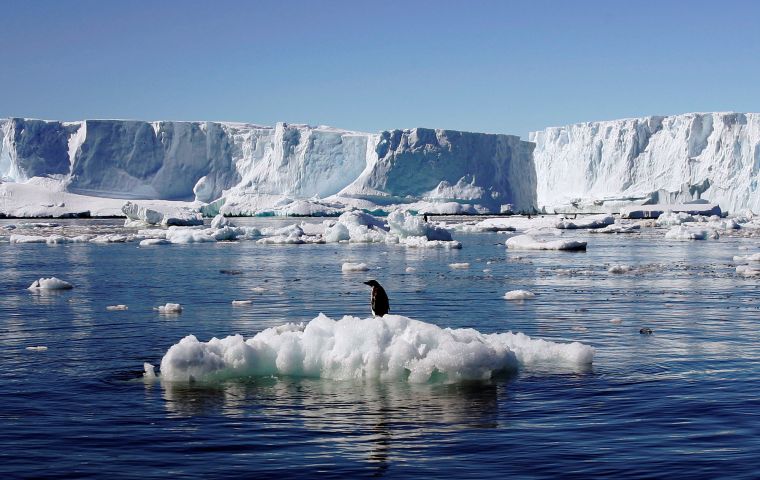MercoPress. South Atlantic News Agency
Researchers concerned over ice shelf disintegrating in East Antarctica
 “Small mistakes in East Antarctica can lead to big oversights”
“Small mistakes in East Antarctica can lead to big oversights” The Conger Shelf, a 460-square-kilometers mass of ice has disintegrated in East Antarctica, it was reported over the weekend. It was the first to break up in four decades of satellite observations. The event took place on March 15.
The shelf's disintegration has alarmed scientists, who have long considered East Antarctic ice to be relatively stable and much less vulnerable to global warming compared to that of West Antarctica. The ice shelves surrounding Antarctica protect the continent's ice sheets and glaciers. If they collapse, a pathway for ice streams from surrounding glaciers to spill water into the ocean would emerge, thus rising the sea's level.
In the past three weeks, sea ice levels have fallen to an all-time low, and temperatures in East Antarctica have soared 40 degrees Cesius above normal. “We're seeing these things earlier than we expected,” said Peter Neff, a University of Minnesota research assistant professor and glaciology expert.
Antarctic ice loss has accelerated in recent years, most of it from West Antarctica, which is a major factor in global sea-level rise. If all the ice in East Antarctica were to melt, the sea level would rise by more than 30 meters, according to scientists.
The collapse of the Conger Ice Shelf occurred at the start of a record-breaking heatwave. On March 18, temperatures rose 50 to 90 degrees above normal in parts of East Antarctica. A weather station in Casey, Antarctica, about 300 kilometers from the Conger Ice Shelf, had maximum temperatures above freezing between March 15 and 18.
Neff said the heat, carried over the continent by moisture known as an atmospheric river, probably played a relatively small role in the collapse of the ice shelf, although it may have contributed to its disintegration. Low levels of sea ice surrounding Antarctica probably played a larger role in hastening the ice shelf's demise, Neff explained. The ice extent dropped below 2 million square kilometers on Feb. 25, the lowest level in 43 years of observations, amid windy and unusually warm conditions.
“We expected the western ice shelves to do this, but not the eastern ice shelves,” he went on. “That's what has caught people's attention. We really need to do more comprehensive monitoring of all these processes in East Antarctica. Small mistakes in East Antarctica can lead to big oversights.”
Neff also said that, despite the surprising collapse of the Conger Ice Shelf, his main concern about Antarctica and its potential to contribute dangerous amounts of sea-level rise is in the west, because West Antarctica “is the one that will first cause big problems for the whole world with sea-level rise.”
In December, scientists concluded that an ice shelf on the periphery of the Thwaites Glacier in West Antarctica could break off within the next five years, accelerating the flow of meltwater and fueling the sea-level rise.
Neff said the contribution to sea-level rise from the Conger Ice Shelf is only a “drop in the bucket,” relatively speaking. Compared to West Antarctica, East Antarctica is colder, higher, drier, and less vulnerable to rising temperatures.
In a TikTok video posted on Twitter, Neff concluded, “This is going to keep happening in a warming world, so the best thing we can do is get rid of our fossil fuels, stop emitting greenhouse gases and limit the amount of warming we experience.”




Top Comments
Disclaimer & comment rulesCommenting for this story is now closed.
If you have a Facebook account, become a fan and comment on our Facebook Page!